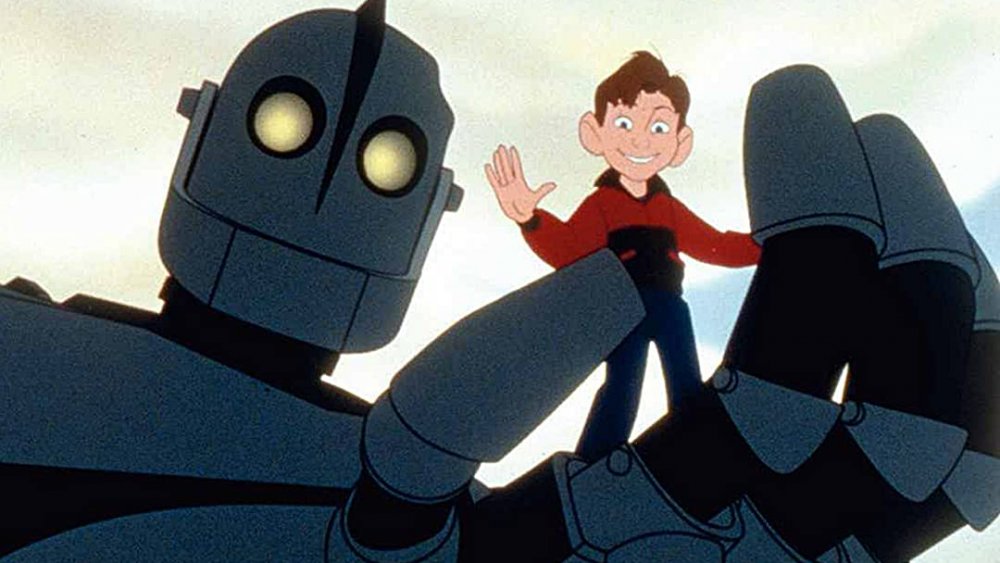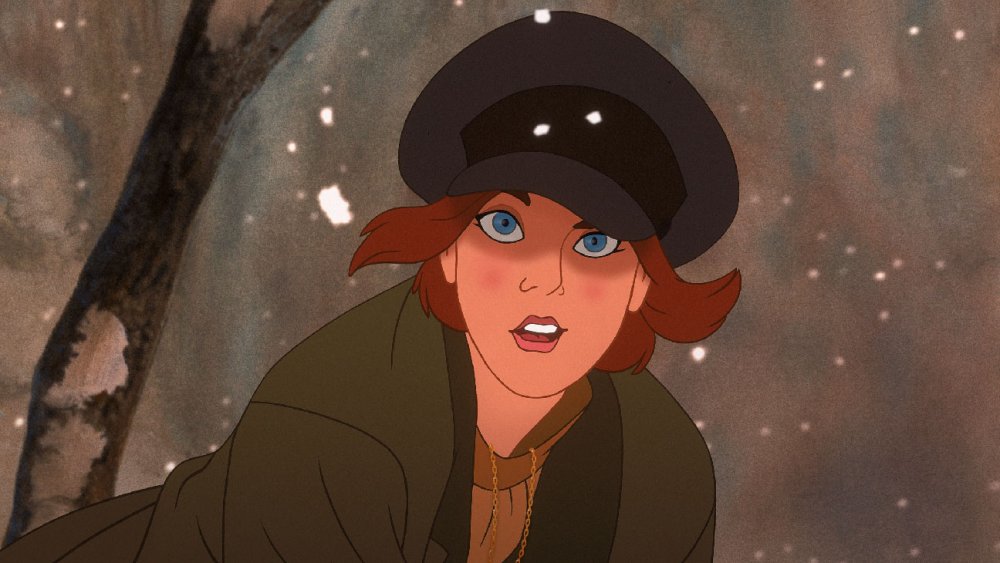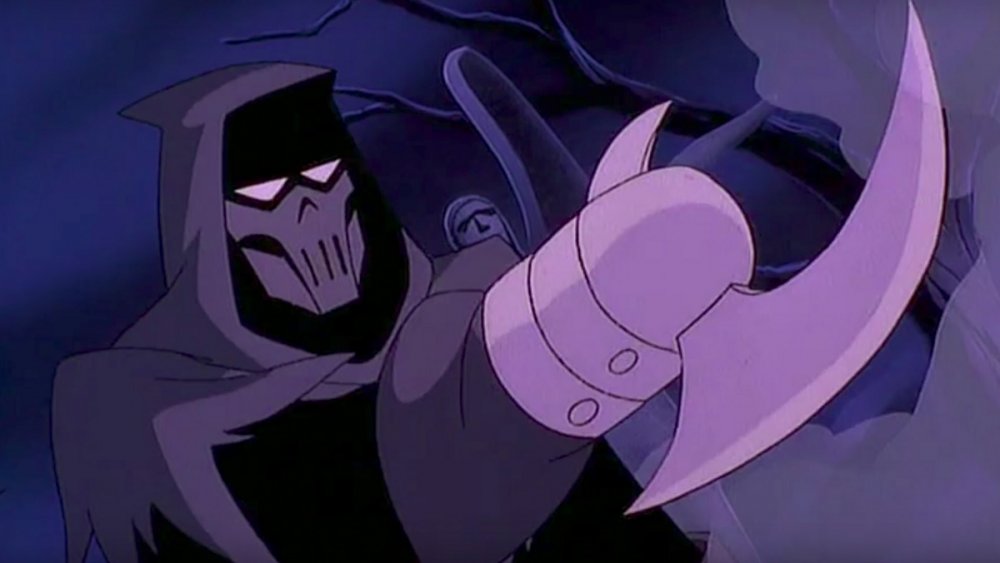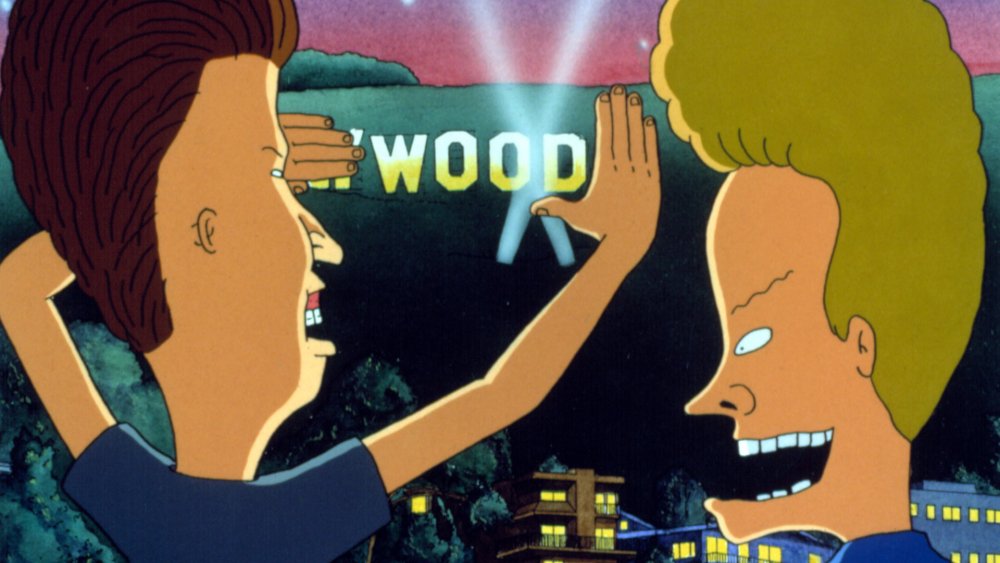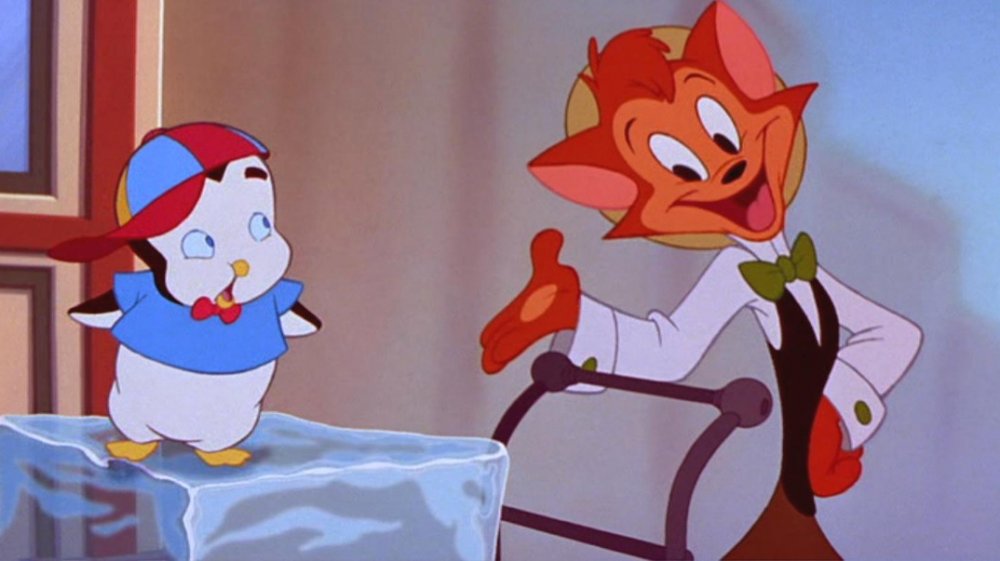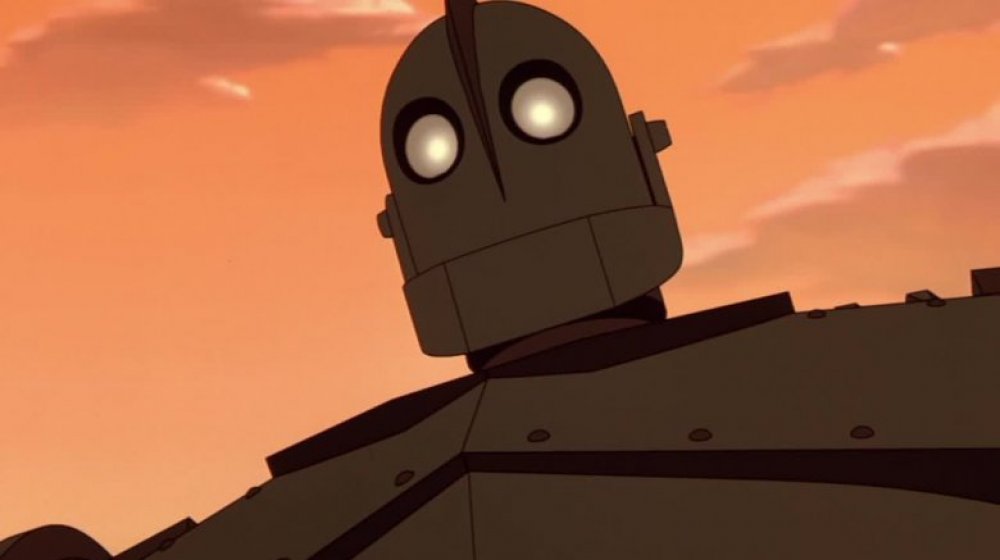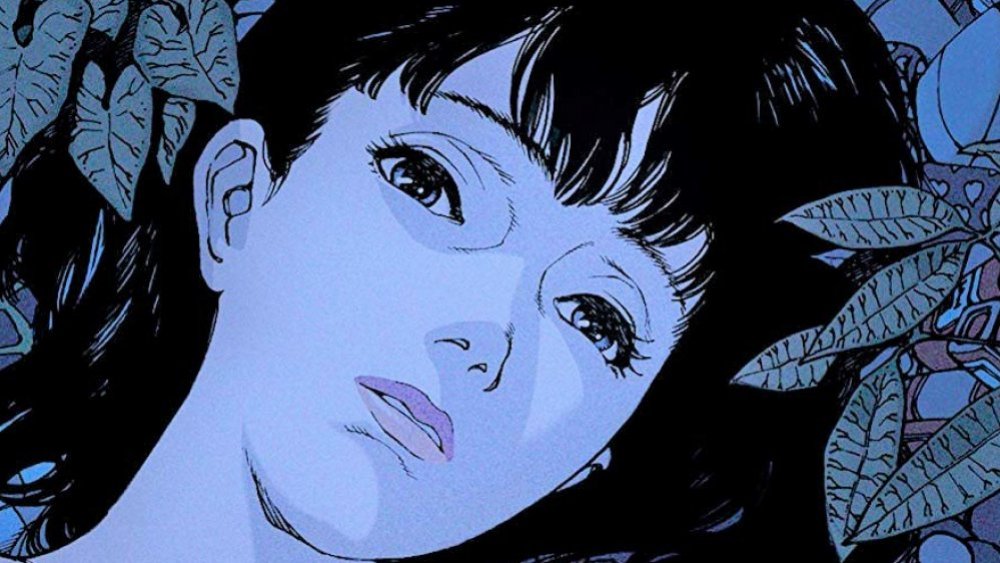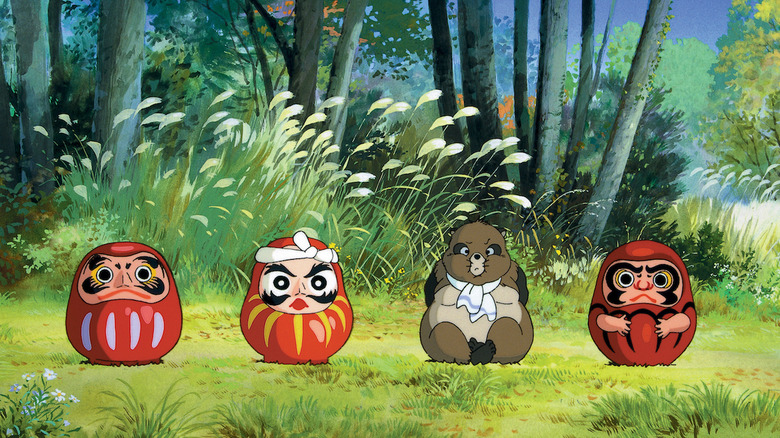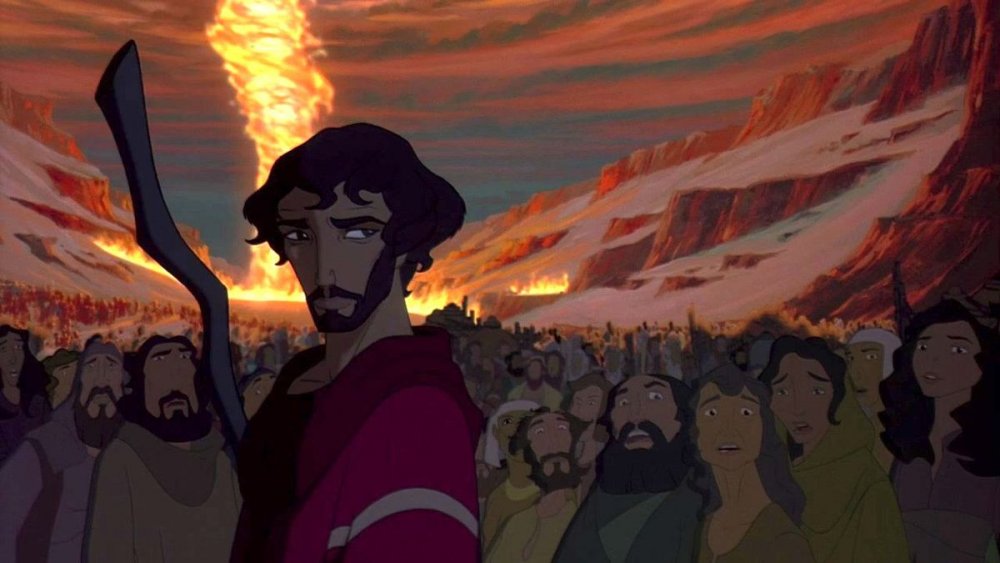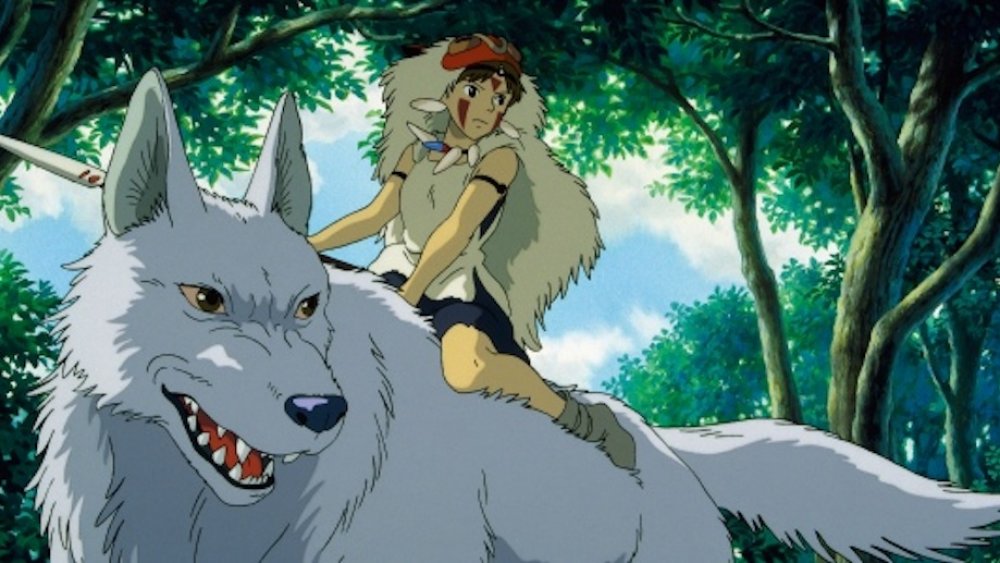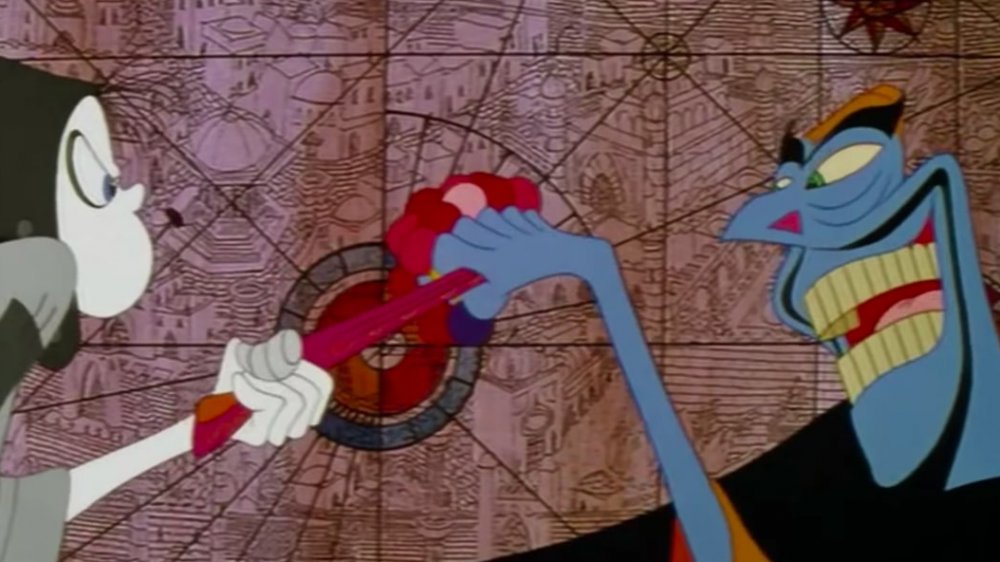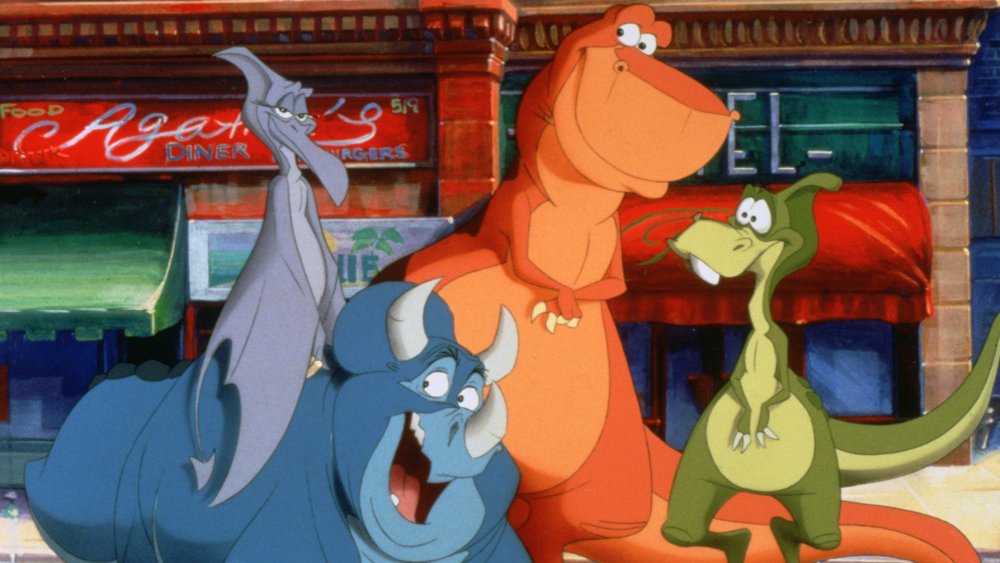The Best '90s Animated Movies That Didn't Come From Disney
With the release of 1989's The Little Mermaid, Walt Disney Animation Studios realized that they had hit upon a tried-and-true formula that defined the studio, and animation in general, for much of the 1990s. With critical and commercial hits such as Beauty and the Beast, Aladdin, and The Lion King, not to mention the computer-generated marvels from Pixar that the studio was distributing at the time, it was hard to escape the behemoth that was Disney's animated output in the '90s.
But with a little time and distance, we can take a look back and see that the history of animated films in the '90s wasn't solely dominated by the Disney/Pixar juggernaut. Alongside their brand of musical features, films from all over the world were slowly redefining the potential for what feature-length animated storytelling could entail. Not just movies for kids, not just musicals, but fully fledged adventurous storytelling told through a most imaginative mode of visual production. From magical spirits of nature to talking dinosaurs and familiar television characters brought to the big screen, let's take a look back at the best '90s animated movies that didn't come from Disney.
Anastasia
In the midst of Disney reigning supreme in the '90s with their lineup of musical movie hits, Fox Animation Studios tried to break into the game with their own take on the princess musical, 1997's Anastasia. Very, very, very loosely based on the legend of the "missing" Grand Duchess Anastasia Nikolaevna of the Romanov family, directors Don Bluth and Gary Goldman (animation veterans in their own right) took the story of a missing Russian royal trying to reunite with her family and threw in the requisite Disney-fied elements of Broadway-style songs (penned by musical theater luminaries Lynn Ahrens and Stephen Flaherty), a deranged villain (Rasputin, voiced by Christopher Lloyd), and a dashing romance at the center of the plot (between Meg Ryan's Anastasia and John Cusack's Dimitri).
Anastasia isn't shy about using the Disney musical playbook as a clear blueprint for its plotting, and Bluth's trademark style of bouncy, stylized characters sets the film's aesthetic apart from Disney's concurrent features. The film would go on to become Bluth and Goldman's most profitable animated release, and to this day, even among discussions of the best Disney princesses, somehow the very not-Disney princess Anastasia is swept into the conversation on many an occasion.
Batman: Mask of the Phantasm
Released between Tim Burton's twisted nightmare of Batman Returns and Joel Schumacher's camp fantasia of Batman Forever, the animated action-packed epic that is Batman: Mask of the Phantasm is a perfect best-of-both-worlds scenario for the caped crusader's feature-length adventures. A mix of gothic architecture and stylization, mixed with the campy, comedic elements that brought the hero to prominence in his early days, Mask of the Phantasm is an extension of the popular Batman animated series that finds Bruce Wayne hunting for a new villain, the Phantasm, who has been mysteriously offing Gotham City's most notable mob bosses.
With a plot that contains one of the most emotionally devastating Bruce Wayne stories out there, all the while mixing vivid, shadowy visuals with rip-roaring one-liners, not to mention a devilishly demented turn from Mark Hamill's iconic take on the Joker, Mask of the Phantasm inexplicably has more heart, humor, and commitment to Bruce Wayne's emotional state than most live-action offerings in the Batman franchise. Especially in our oversaturated superhero market, it's a story definitely worth revisiting.
Beavis and Butt-Head Do America
It doesn't get more 1990's than those incessantly laughing, TV-addict teenage nincompoops known as Beavis and Butt-Head. After taking over the MTV airwaves in the early part of the decade, it was only a matter of time until this depraved duo made the leap into the multiplex with their own cinematic extravaganza, 1996's Beavis and Butt-Head Do America. After their TV gets stolen, Beavis and Butt-Head find themselves on a cross-country roadtrip filled with drugs and the strangest government conspiracy this side of the Hoover Dam.
While Beavis and Butt-Head's particular brand of childish, man-boy comedy is certainly not for everyone (whether we should be laughing with or at their childish, sexist behavior is a topic for another time), watching these buffoons plopped right in the middle of a John Clancy-style thriller provides enough comedic set pieces to keep you invested. Throw in a desert hallucination sequence filled with some of the trippiest animation the decade had to offer, and Mike Judge's animated laugh-fest has enough to make it a necessary '90s animated landmark.
Cats Don't Dance
In their own attempt at claiming '90s animated musical glory, Turner Feature Animation (in their first, and last, fully animated feature outing) came onto the scene with Cats Don't Dance, directed with bonkers comedic energy by Mark Dindal, who would go on to helm The Emperor's New Groove and Chicken Little. Cats Don't Dance chronicles an alternate 1930s Hollywood, where humans can act, sing, and yes, even dance in the spotlight, while animals (fully anthropomorphized in this universe) can only play silent, background characters. But that's not going to stop our hero, Danny (a spunky Scott Bakula-voiced song-and-dance cat) from doing what he can to make sure he and his animal friends get their shot at sharing their talents with the world.
With bright and energetic animation matched to the infectious energy of Randy Newman's original songs, Cats Don't Dance (though a disappointment at the box office) has enough charm and spirit to make it well worth a revisit. And if nothing else, it's a wonderfully told allegory for fighting prejudice within the entertainment industry, and what more could you ask for?
The Iron Giant
In 1999, on the cusp of the new millennium, future two-time Academy Award winner Brad Bird made his directorial debut with what is still considered one of the most daring, complex, and gut-wrenching animated films of the 20th century, The Iron Giant. A classic "boy meets robot" story based on Ted Hughes' novel The Iron Man, Bird's film asks the question "what if a gun had a soul, and didn't want to be a gun anymore?" While the rest of humanity sees the Giant at the center of the story as a menace to society, the young boy protagonist, Hogarth, sees him for the gentle soul he truly is.
The Iron Giant succeeds not only because of its expertly crafted sci-fi tale, but a tear-jerkingly beautiful ode to the power of change, acceptance, and the ability to forge one's own destiny in this world. In the film's emotional climax, the Giant flies up into the sky, ready to face his demise, remembering his friend Hogarth's immortal words: "You are who you choose to be." It's a moment that leaves no dry eyes among those who watch it, and it cemented Bird's directorial skills and the fate of a heroic iron giant for years to come.
Perfect Blue
The late, great Satoshi Kon made his directorial feature debut with 1997's Perfect Blue, a twisted and horrifying animated thriller that established Kon as one of the most terrifyingly creative animators working in the field. Based on a novel by Yoshikazu Takeuchi, Perfect Blue follows the creative journey of Mima, a former pop star trying to make the jump to a full-fledged acting career, and what happens when her fans try to take control of her career for her.
Later films of Kon's, including Millennium Actress and Paprika, would dive deeper into the themes that poke through the cracks of Perfect Blue. Kon's work deals with concepts of dual identity, celebrity, and questioning the very nature of what is real and what is a shared fiction. This is only exacerbated by the hypnotic editing of Kon's work, with scenes and images folding into each other like an origami nightmare of the mind. With this first feature, Kon planted the seeds for an animated legacy that stands strong to this day.
Pom Poko
While many people immediately associate the Japanese animation studio Studio Ghibli with master director Hayao MIyazaki, he was not alone in helming that famed studio's greatest hits. Alongside him was the late animation master Isao Takahata who, in 1994, wrote and directed the charming animal-rights adventure Pom Poko. The film follows the tanuki (a kind of Japanese raccoon dog) who, faced with losing their homes and livelihoods in the wake of contemporary human industrialism, must use their powers of transformation to protect themselves and stop the humans from desecrating their land even more.
With charming animal heroes in a lavishly designed animated setting, Pom Poko is a severely understated film in the Studio Ghibli catalog, telling a charming, silly, and entertaining story that still gets across an important message about humans learning to live with our animal cohabitants on this planet. Takahata, an animation legend, is someone whose filmography is sometimes overlooked when placed beside that of his collaborator Miyazaki, but Pom Poko is a great starting point to delve into his vast and varied works.
The Prince of Egypt
Jeffrey Katzenberg, ousted from Disney Animation, co-founded his own studio (DreamWorks SKG) to break into the animated musical arena of the 1990s. Katzenberg and his team went all out to create 1998's The Prince of Egypt, an animated retelling of the biblical story of Exodus, filled with emotionally wrought musical numbers (penned by Stephen Schwartz), an all-star cast (including Val Kilmer, Ralph Fiennes, and Michelle Pfeiffer, among many others), and the epic scale that such a literal biblical undertaking demands.
While Anastasia took the Disney Princess musical model and ran with it in a pretty linear fashion, The Prince of Egypt inflates the blueprint to even more grandiose, epic proportions, providing the story of Moses freeing the Jewish slaves from Egypt with the level of gravitas one would reserve for a live-action retelling. Katzenberg's bet paid off, with the film making bank at the Christmastime box office, and even scoring an Academy Award for one of the film's songs ("When You Believe"). While DreamWorks veered off into CGI-fueled territory in the new millennium, there's no denying the power and scope of The Prince of Egypt.
Princess Mononoke
Any list of great animated films is incomplete without a film from the mastermind of animated whimsy, Hayao Miyazaki. After making a name for himself with earlier outings such as My Neighbor Totoro, Kiki's Delivery Service, and Porco Rosso, Miyazaki achieved new heights with 1997's daring fantasy epic Princess Mononoke. The film tells the story of the young prince Ashitaka, who, after finding himself cursed as the result of a fight with a deadly boar spirit, ends up in the middle of a world-shattering clash between the spirits of the forest and the resource-hungry humans who can't seem to find any sort of harmony with each other. It's up to Ashitaka, and the titular princess — a human raised by wolves — to protect the forest and restore peace to the world.
Miyazaki's masterful character designs and epic staging were never better than they are here, with various creatures of all shapes and sizes animated in gloriously expert detail to tell a story of man vs. nature that fits well into the familiar ideology of the rest of his work. This also ended up being the first of Miyazaki's films to garner a major U.S. release, packaged with a star-studded cast to dub the film, including Billy Crudup, Claire Danes, and Minnie Driver. Not only is Princess Mononoke one of Miyazaki's most adult and daring films, it's also the one that brought his singular animated vision to new audiences for years to come.
The Thief and the Cobbler
Though veteran animator Richard Williams' animated epic The Thief and the Cobbler was technically "released" in 1993, under the name The Princess and the Cobbler, it's not the same film he'd spent years working on bringing into existence. Nor was Arabian Knight, another attempt at salvaging the real masterpiece that Williams was trying to make, before ballooning budgets and studio meddling got in the way of the world seeing his work for what it truly was meant to be.
Williams toiled for decades on his magnum opus, the story of a Golden City under attack by a fast-approaching army, and the Cobbler, Princess, and unwitting Thief who must band together to protect their kingdom. After enjoying groundbreaking success with his animated work on Who Framed Roger Rabbit, Williams was granted a "blank check" of sorts to gain further time and funding for his project. But as the budget grew, the plug was pulled, and Williams' vision was completed by a totally different animation studio, meaning his work would never see the light of day in its full form. While Williams' vision was never fully realized, fans and animation devotees have spent the past few decades pulling together animatics, concept art, and lost archival footage to create the "Recobbled Cut," the closest approximation of what Richard Williams' The Thief and the Cobbler could have been.
We're Back! A Dinosaur's Story
Roll back the rock 'til the dawn of time and sing the song of one of the strangest animated oddities of the 1990's with 1993's We're Back! A Dinosaur's Story. Produced by Steven Spielberg's Amblimation Studio, was released just a few months after Spielberg's other dino-related cinematic outing, Jurassic Park, providing a more child-friendly look into the dinosaur world. Though it certainly didn't achieve the same level of success as its live-action Spielbergian counterpart, We're Back! is still a charming, verging-on-demented look at what happens when a quartet of dinosaurs are given the power of speech and transplanted to a modern-day New York City.
Featuring a voice cast of some of the most random voice actors you could throw into an animated feature (John Goodman, Walter Cronkite, Jay Leno, Yeardley Smith, and Julia Child are just some of the big names filling out the cast), it gets by on sheer weirdness alone — the plot, written by Pulitzer Prize-winning playwright John Patrick Shanley, is somehow able to encompass talking dinosaurs, aliens, time travel, a haunted circus, and the Macy's Thanksgiving Day Parade all in less than 90 minutes. What We're Back! lacks in narrative coherence, it more than makes up for in memorable characters, haunting visuals, and one heck of a musical number.
